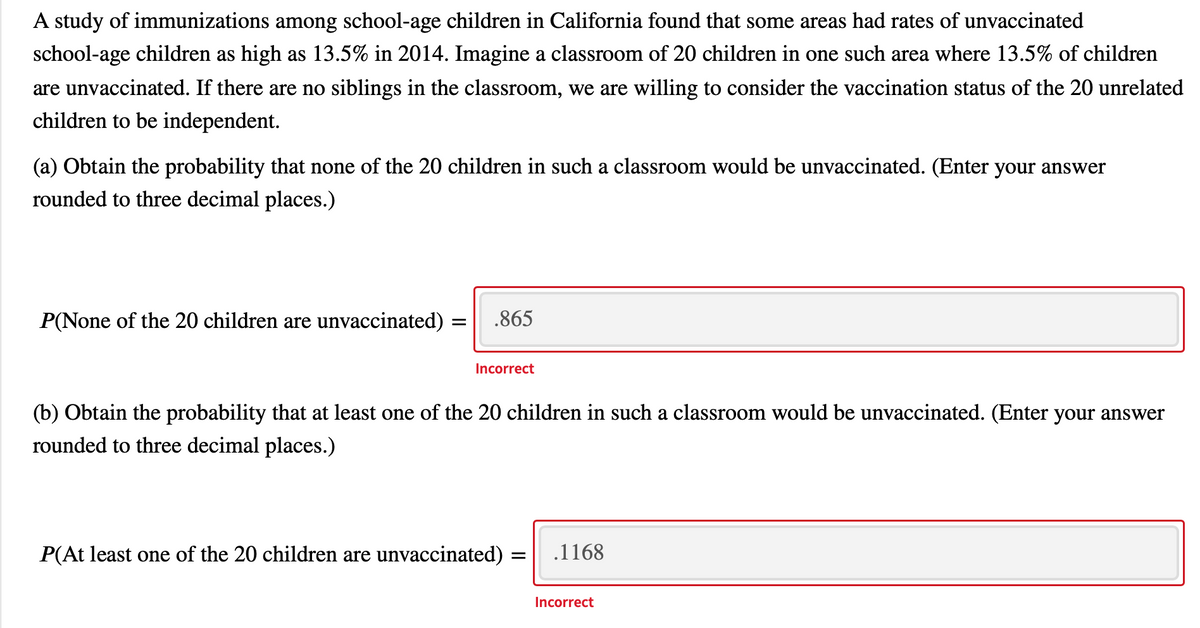A study of immunizations among school‑age children in California found that some areas had rates of unvaccinated school‑age children as high as 13.5% in 2014. Imagine a classroom of 20 children in one such area where 13.5% of children are unvaccinated. If there are no siblings in the classroom, we are willing to consider the vaccination status of the 20 unrelated children to be independent. (a) Obtain the probability that none of the 20 children in such a classroom would be unvaccinated. (Enter your answer rounded to three decimal places.)
Contingency Table
A contingency table can be defined as the visual representation of the relationship between two or more categorical variables that can be evaluated and registered. It is a categorical version of the scatterplot, which is used to investigate the linear relationship between two variables. A contingency table is indeed a type of frequency distribution table that displays two variables at the same time.
Binomial Distribution
Binomial is an algebraic expression of the sum or the difference of two terms. Before knowing about binomial distribution, we must know about the binomial theorem.
A study of immunizations among school‑age children in California found that some areas had rates of unvaccinated school‑age children as high as 13.5% in 2014. Imagine a classroom of 20 children in one such area where 13.5% of children are unvaccinated. If there are no siblings in the classroom, we are willing to consider the vaccination status of the 20 unrelated children to be independent.
(a) Obtain the probability that none of the 20 children in such a classroom would be unvaccinated. (Enter your answer rounded to three decimal places.)

Trending now
This is a popular solution!
Step by step
Solved in 2 steps




